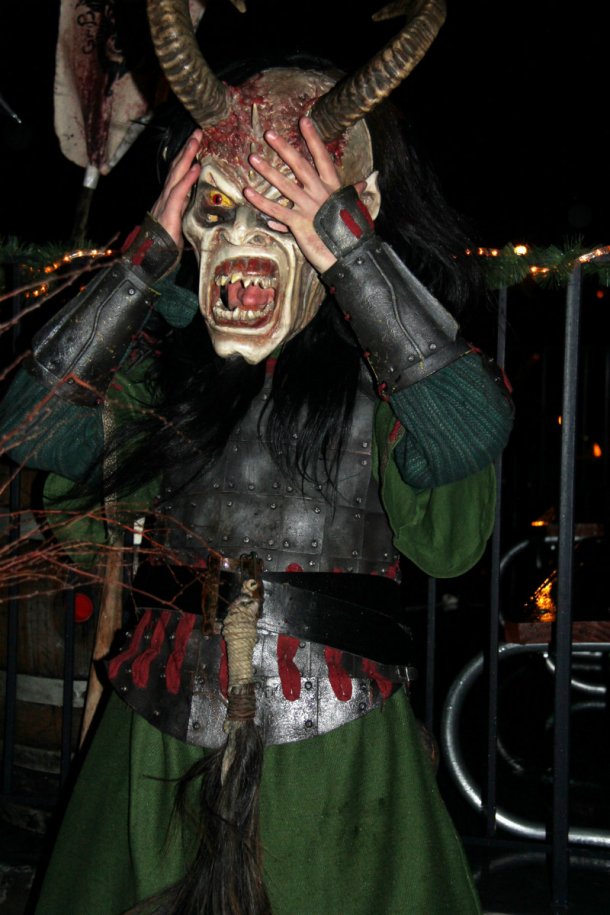About Krampusnacht
Why would anyone spread Christmas joy when they can spread Christmas terror instead?
Krampusnacht 2019 :
How about a devil with flaming coals for eyes, matted fur and twisting stag horns who slaps people with birch twigs and kidnaps children in a large sack or casket so he can later drown or eat them?
Now we're talking. And specifically, we're talking about Krampus: a bestial demon of debatable historic origin who haunts Central Europe in December, and particularly during the Krampusnacht festival. Some say Krampus is a holdover from pre-Christian pagan nature spirits turned into a devil by the Catholic Church. Some say he's always been a devil, as evidenced by his rusty chains and shackles, symbols of his escape from Hell.
Whatever the case may be, Krampus plays second fiddle and assistant to St. Nicholas—you probably know him as Santa Claus—during the Feast of St. Nicholas (December 6). The hairy fiend threatens to beat naughty children with bundles of ruten, or birch twigs, or stow them away in a sack even as St. Nick rewards nice kids with presents. Gifts or human trafficking: Christmas does not play around in the Alps.
Cozying up for Christmas, and Krampusnacht
In Austria, Bavaria (Germany), South Tyrol (Italy), Slovenia, Croatia and parts of Hungary, the Feast of St. Nicholas is usually celebrated with Christmas pageants and parades; the latter include crowds of young men dressed as Krampus, which is where the term Krampusnacht (Krampus night) derives from.
Yet Austria is where Krampus celebrations evolve from village parade to full on festival. Austria is where Krampus is so popular, psychologists and schools are considering banning the creature because it's so ubiquitous and scary to children. Austria is where a Krampus Museum can be found in the town of Suetschach. And 14 miles away, in the Austrian city of Klagenfurt, about equidistant between Innsbruck and Vienna, is where you'll find the largest Krampus celebration in the world.
